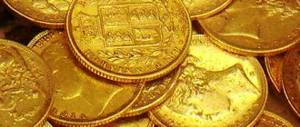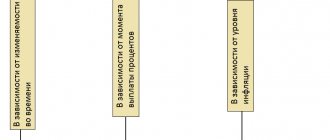The times when Lenya Golubkov, in an advertisement for Russia’s largest financial pyramid, MMM, happily said: “I’ll buy my wife boots,” and claimed that he was not a freeloader, but a partner, are gone, it seems, forever.
The followers of Sergei Mavrodi’s brainchild also became a heritage of the past: “Russian House Selenga”, “Hoper-Invest”, “Telemarket” and many others. But did the financial pyramid itself as a scheme go away along with these names?
Alas, practice shows that a scientist, contrary to the well-known saying, still needs to be taught: it is still alive, and there are many naive people who are ready to give their money in exchange for a donut hole under the guise of beautiful words “investment”, “profit”, “ get rich quick without any effort.”
I bet you didn’t even suspect that there are currently at least five options for scamming money using the Ponzi scheme operating in our country and thriving on people’s gullibility.
In the article, together with you, we will look at the types of financial pyramids operating in Russia, we will try to understand how they work and find out how the fight against them is going on. Along with this, the information in the article is intended to help not invest money in such projects.
What is a financial pyramid and how did it appear?
A financial pyramid scheme is a fraudulent business model. The income of its first participants is provided from the funds of people who joined the scheme later, and not through sales of goods/services.
The trick is that it is impossible to pay income to all participants - and the creators of the pyramid know this. The scheme works as long as there is a constant influx of “investors” and their money. When new people stop investing, there is nothing to pay income to old participants, and the pyramid collapses.
This scheme received this name because of its structure - a large number of “investors” at the lower level provide income to a smaller number of participants who are at a higher level.
The financial pyramid is based on a Ponzi scheme. This fraudulent business model was invented by Italian emigrant Charles Ponzi back in 1919. He arrived in the USA with $2.50 in his pocket, and he was unable to earn money legally. And then the Ponzi swindler came up with a cunning scheme to make easy but risky money.
Charles founded the company The Securities Exchange, which sold debt receipts: the “investor” invested $1 thousand, and after 90 days the company promised to pay $1.5 thousand. 50% in 3 months - where could they come from? It turns out that Ponzi did not conduct any transactions. The “profit” was taken from the money of new participants in his scheme.
Already in 1920, the pyramid burst, but Charles was the first to enrich himself in this way by $20 million. However, his followers earned tens of times more.
And although the concepts of “financial pyramid” and “Ponzi scheme” are considered synonymous, they have some differences:
- Life expectancy: classic pyramids live shorter. They focus only on the constant influx of new investors, and Ponzi schemes also try to retain the old ones.
- legal status: Ponzi schemes are outright scams, and pyramid schemes can sometimes be part of legitimate businesses.
- work structure: pyramids require “investors” to bring new people. From each of them the participant receives a commission, and only then sends the money “upstream”. In Ponzi schemes, the funds received immediately go towards covering the income of earlier investors.
Scheme one: investment projects
The organizers of such a pyramid offer to invest money in a promising business: an Internet startup, a promising construction site, an environmentally friendly agricultural company, the extraction of raw materials, an innovative miracle technology - there are many options.
For several months now, a criminal investigation has been going on against the organizers of the pyramid, who attracted funds from citizens to develop a large salt deposit in the Nizhny Novgorod region and to build a salt plant, promising high dividends. Thousands of people invested money, including many pensioners. However, they never saw any dividends. And it was also not possible to sell the shares and return the invested money: the shares of the salt project are not traded on the stock exchange. At meetings with shareholders, company representatives stated that in just three months they would buy back the shares themselves. But they never did. In total, investors lost billions of rubles. And even when the court sentences the organizers, there will be little hope of getting the money back.
In several regions of Russia, companies began their activities, attracting investments in innovative construction, namely, in the creation of houses, individual parts of which were printed using a 3D printer. Such technology actually exists and is already being used abroad. But in our country, under the guise of innovators, scammers acted. They did not carry out any construction. The main goal was to raise more money. For this purpose, investors who brought five people who invested $100 into the pyramid were promised bonuses in the form of sea cruises.
In the Far East, a pyramid scheme actively advertised itself, offering to invest in the fast-growing economies of neighboring countries, primarily China. This company positioned itself as an international investment platform created on the basis of a foreign logistics company. The organizers offered a return of up to 1% on investments in real estate, food production, consumer goods, and electronics. The investment period was 12 months, and the minimum amount was only 5,000 rubles. At the same time, it was possible to become an investor only by personal invitation from a company partner. And bonuses were also paid for attracting new investors and partners.
Like Mavrodi. New pyramids pretend to be games and training courses Read more
Films/books about financial pyramids
#1. "Liar, the Great and the Terrible" (2017)
The film is about how Bernard Madoff managed to deceive fellow bankers and hundreds of thousands of private investors for 40 years. The plot is based on real events - the so-called “Bernard Madoff scam,” the largest in history. Starring Robert De Niro. The slogan of the film: “Only those you trust can truly betray you.”
#2. K. Cross “Anatomy of a Ponzi Scheme: Scams Past and Present: True Crime Tales of White Collar Crime”
In this book, the author gives a complete understanding of the Ponzi scheme - the history of its creator, operating principles and the most scandalous cases. In addition, Cross writes how to spot this scam so the reader can be more careful.
The trick of the book is to debunk myths about the parties involved in such business models. Thus, there is an opinion that investors in Ponzi and pyramid schemes are gullible people who want quick and easy money. However, sometimes investors may not realize who they have entrusted their money to. For example, pension fund investors had no idea that he was involved in Bernard Madoff's structure. Therefore, the fact of losing funds came as a shock to them. The book makes it clear that no one is immune from financial fraud.
Scheme three: online games
An example of such a pyramid disguised as a game is the “Kotel” (or “Black Cash”) application, which came to Russia from Kazakhstan. The essence of this scam is simple. The player must overcome four levels - orange, yellow, green and blue. To pass the orange level, it is necessary to attract eight participants, each of whom must transfer 2,400 rubles to the organizers on a card - a total of 19.2 thousand rubles from eight. This money is received by the one who is at the last, blue level. After that, he leaves the game, and all other participants move up one level until, in turn, they reach the last level.
What these games have in common with a financial pyramid is that their participants can earn money only through the arrival of new players. But sooner or later their flow dries up, and many gambling people lose their invested money without receiving any winnings.
It is interesting that this scheme is a reincarnation of a similar game from the early 1990s: only then transfers were not electronic, but postal. Almost 30 years have passed, and people are still falling for the old tricks. And at the same time, they do not even realize that any person who involves friends and acquaintances in such a game unwittingly becomes an accomplice in organizing a financial pyramid. And this is a criminal offense in Russia.
All sides of the pyramid. What are the modern heirs of MMM? Read more
Coinside.ru
Is Bitcoin a pyramid scheme? What do cryptocurrency and big money scams have in common? We decided to look into this issue and tell you about the largest financial frauds of the last century.
As you already know, just the other day the Central Bank of the Russian Federation equated Bitcoin to a financial pyramid. The main arguments of this analogy can be expressed in quotes from the director of the national payment system department of the Bank of Russia, Timur Batyrev, and his deputy, Andrei Shamraev:
The analogy between Bitcoin and pyramids is quite obvious due to the speculative nature of transactions with it. There will be people who will be ready to part with money in the hope of easy profit or who are ready to influence the Bitcoin rate in order to obtain maximum profit. But there will also be people who will pay for this profit. Bitcoin is only backed by the time spent “mining” it, unlike securities, stocks or bonds.
So what is a financial pyramid?
A financial pyramid is an organization that ensures its income and the income of investors by constantly attracting funds. The first investors of the pyramid receive income from the deposits of new participants, and those from the deposits of subsequent participants, and so on until its complete collapse. As a rule, the true source of income of the organization is hidden or is false. As soon as the pyramid is deprived of new financial contributions, it collapses.
Is Bitcoin a pyramid scheme?
The financial pyramid promises high returns, which cannot be maintained for a long time and repayment of obligations to investors is obviously impossible. Nobody promises high profits to Bitcoin holders; cryptocurrency is essentially a convenient way to store your money and pay with it for various goods and services. Behind bitcoins is a real product with software and special properties (anonymity, low transaction costs, decentralization, lack of inflation), which ensure its value. A typical pyramid is not a product of any kind.
To better understand financial pyramids and understand whether Bitcoin has anything in common with them, we invite you to get acquainted with the largest and most destructive money scams of the last century. So, let's get started.
Ponzi scheme
One of the very first and most famous pyramids belongs to the Italian swindler Charles Ponzi, who in 1919 came up with a get-rich-quick business scheme. One day he received a letter with an international exchange coupon enclosed inside, which anyone could exchange for stamps and send a reply letter back. The most interesting thing was that in Europe you could get only one stamp for such a coupon, while in the USA you could get as many as six stamps for it.
After that, Charles created, invited investors and began offering people to make money on simple arbitrage, i.e. buying and selling goods in different countries. To those who invested in his papers, Ponzi promised 150% of the invested amount in 45 days. Residents of Boston rushed to buy papers, while Charles maintained interest with paid articles in the press.
But in fact, Charles Ponzi did not buy coupons, which were exchanged exclusively for stamps, but paid old investors the money of new participants. By July, Ponzi bills were bringing him up to $250,000 daily. In August of the same year, the company was inspected by federal agents and liquidated as a pyramid scheme. During the trial, part of the money was returned to the investors, more than 2 million were never found, and the Italian himself received 5 years in prison.
Portuguese pyramid of Dona Branca
An ordinary Portuguese woman, Maria Branca dos Santos, most often called Dona Branca, decided to enrich herself by opening her own bank in 1970. To attract customers, she promised an interest rate of 10% per month to any depositor. Poor people from their country rushed to invest money in a bank that could provide them with such rapid financial growth. For 14 years, thousands of clients trusted their money to Dona, who by that time was nicknamed “the people’s banker.” In 1984, the pyramid collapsed, Blanca was arrested and sentenced to 10 years in prison. Maria died alone, although in 1993 her machinations inspired the Portuguese National Opera to stage A Banqueira do Povo (The People's Banker).
Scheme "Double Check"
No, despite the beautiful name, this scheme has nothing to do with chess. The story begins in 2005, when an ordinary high school teacher from Pakistan, Syed Sibtul Hassan Shah, returned from Dubai to Wazirabad (Punjab province) and made a lucrative offer to his neighbors. Having convinced everyone that on a business trip he learned the latest exchange program, he offered everyone to double their savings in just a week!
That is why the scheme was called “Double Check”. Within a year and a half, the pyramid had grown throughout the country, more than three thousand investors gave him savings worth more than $880 million at that year’s exchange rate. Syed Shah was even planning to become the political leader of the region when the police arrested him. Thousands of people took to the streets demanding the release of their financial guru. At the moment, the hero of the story is behind bars, and the investigation is still ongoing.
Lou Pearlman's $300,000,000 Scheme
You may not have heard of Lou Pearlman, but the bands he created certainly have. Thanks to him, bands such as Backstreet Boys and 'N Sync were born. But he also gained his fame thanks to a criminal scheme worth $300 million, which he “raised” by deceiving investors and large banks. In 1981, former tycoon Lou Pearlman founded Trans Continental Airlines Travel Services, Trans Continental Airlines Inc and a dozen other organizations that existed solely on paper. Which, by the way, did not stop him from selling shares in these companies for 20 years!
When the scheme was discovered, Lu tried to flee the country and was sentenced to 25 years in prison and a $1 million fine. And this is after he made a deal with the court, where he admitted fraud against about 250 victims who lost over $200kk, as well as 10 financial institutions that lost about $100 million.
European Royal Club
The non-profit association “European Kings Club” was organized by Damara Bertges and Hans Gunter Spachtholz in 1992 and was positioned as a real force opposing large European banks and capable of helping small businesses.
Under this scheme, new members of the European Royal Club had to buy a “letter”, which was essentially a share of the club. The cost of such a share was 1,400 Swiss francs. This “letter” gave the owner the right to receive 200 francs monthly, which guaranteed the investor to double his contribution within a year.
The criminal scheme was uncovered only 2 years later, when about a hundred thousand German and Swiss investors lost a total of about 1 billion US dollars. Even during the sentencing, the victims refused to acknowledge the fraud and booed the judge. The enterprising Damara Bertges received 7 years in prison, and her partner only 5.
Bernard Madoff scam
Barnard Medoff's pyramid scheme is one of the largest financial scams in modern history. Among the victims are more than three million people and hundreds of financial institutions that lost their savings totaling more than 64.8 billion.
Bernard opened the Madoff Investment Securities investment fund, which had a reputation as one of the most reliable and profitable in the United States. Investors who invested in Madoff could receive 12-13% per annum. Most investors were convinced that this company was able to achieve such success thanks to insider information, and a serious list of clients, including numerous hedge funds, banks and celebrities, was a kind of guarantee of the reliability of this fund.
In the fall of 2008, a number of large investors turned to Madoff with a request to give out their invested funds totaling about $7 billion, but the fund simply had nothing to pay. The pyramid collapsed. It turned out that Madoff Securities has not been investing investors' money for at least the last 13 years! At the time of the proceedings, the company's debt amounted to approximately $50 billion. It is also noteworthy that Madoff’s own sons turned him in to the FBI, to whom he told about his biggest lie in the Ponzi scheme.
In contrast to the relatively short sentences of previous pyramid schemers, Bernard Madoff was sentenced to 150 years in prison.
Wang Feng's Ant Farms
A rather unusual financial pyramid was built by Chinese businessman Wang Feng. In 1999, he opened the company “Yilishen Tianxi Group of China” and offered anyone who wanted to become an investor for only $1,500. For this money, investors received a box with special ants, which had to be fed and raised according to special instructions for 90 days. After this time, company representatives came and took the insects back, processing them into aphrodosiacs or medicine to treat arthritis. At least that's what the company told poor Chinese farmers.
After every 14 months of such hassle, investors received about $450, which was equal to a 32% annual return. This pyramid was also successful because Wang Feng quickly became rich and managed to get promoted in newspapers and television. He even became a state nominee. "China's 100 Best Businessmen" Award.
When the company's turnover reached about two billion dollars, Wang's ant scheme collapsed, and he himself was arrested and sentenced to death.
MMM by Sergei Mavrodi
The largest financial pyramid in the history of Russia, founded by Sergei Mavrodi together with his brother Vyacheslav and his wife Marina. The name of the company “MMM” was nothing more than an abbreviation of the names of the founders. As you and I remember, in the early 90s, this private company offered its investors 1000% dividends, luring millions of residents of the country into the pyramid. Over the five years of his work, Mavrodi received over $1.5 billion.
His activities had such serious publicity that Sergei was even elected to the State Duma and received parliamentary immunity, which did not stop him from being arrested in 2003, when the pyramid finally collapsed. According to Sergei Mavrodi himself, the collapse of MMM is solely the merit of the country’s government.
American insurance system
You might be surprised, but social insurance in the United States has a fairly similar structure to the Ponzi laugh that heads our top financial pyramids. In 1935, President Roosevelt introduced this insurance as part of the fight against poverty, which covered older Americans during the Great Depression. These measures allowed the unemployed and pensioners to receive money, which came from taxation of the working part of the US population.
Although Social Security in America has undergone a number of changes over the years, the essence remains the same: old savers receive money from new savers. However, analytical firms have calculated that already in 2021 this scheme will face serious, and quite possibly destructive, consequences. During these years, the so-called baby boomers will retire and there may simply not be enough money for everyone.
If you are still a beginner and are about to purchase your first cryptocurrencies, create an account with the most reliable cryptocurrency exchange, Binance. We have prepared step-by-step instructions for beginners.
Wang Feng's Ant Farms
In 1999, Chinese businessman Wang Feng came up with a rather unusual scheme. His company invited anyone to become an investor in his company. For $1,500, investors received a box of “special” ants, which had to be fed and raised according to a special secret scheme for 90 days. Every 14 months, the company paid its investors $450, which corresponded to an annual return of 32%.
As stated by Wang Feng's company, ants were used in pharmaceuticals to make drugs. Of course, these ants were not actually used anywhere, but served only as a reason to raise funds.
Millions of people brought their money to Wang Feng's company. In 2 years, funds were raised in excess of $2 billion . Wang Feng himself became a highly respected businessman in China, he was repeatedly nominated for various prestigious titles and awards, shown on TV, and interviewed. He even received the most prestigious state award, "China's 100 Best Businessmen." Soon the whole scheme collapsed, and Wang Feng himself was sentenced to death.
Assessing the health of brands
Assessing the health of a brand allows you to track changes in consumer attitudes towards the brand from the beginning of their acquaintance with it. This is necessary for the promotion of the company, as it allows you to notice errors in time.
To create a well-known brand that enjoys customer loyalty, when building marketing, attention is paid to:
- creation of an information network that increases the brand’s popularity, consumers’ knowledge of its principles and assortment;
- understanding the level of relevance of the company;
- knowledge of aspects that influence the purchase decision;
- the first experience of consumer interaction with the brand;
- creating a habit among the target audience to interact with the brand’s offerings;
- the optimal place of the organization among competitors;
- increasing sales levels;
- consumer loyalty.
Double Check
The pyramid is named after an ordinary teacher from Pakistan named Syed Sibtul Hassan Shah. The story begins back in 2005. Returning from Dubai to his native Wazirabad, Syed Shah first began to spread information among his neighbors that he had a secret program that allowed him to earn fabulous profits by trading shares on the stock market.
At first there were few people willing, there were no more than 10 first investors. But after the Shah pays them the first interest from the profits, the number of people willing will simply grow exponentially.
$1 billion was collected from almost 300 thousand people. Syed Shah became so popular that they even wanted to nominate him for election as head of the region.
As always, everything ended quite prosaically. The Shah was arrested for fraud, and his brainchild immediately fell apart. Thousands of people took to the streets in defense of Syed Shah, asking for his release from the financial guru.
European Royal Club
In 1992, an organization of the same name (European Kings Club) was created. The founders of the organization, Damara Bertges and Hans Gunther, positioned their brainchild as a counterweight to large European banks in order to assist in the development of small and medium-sized businesses.
People were asked to buy certain income letters, which were essentially shares. The cost of the letter was 1,400 Swiss marks, the promised profitability was 200 marks per month. The result was a complete doubling of the invested funds after a year.
The criminal scheme was uncovered only 2 years later. The total losses among investors exceeded the astronomical amount of $1 billion . The organizers of the pyramid got off with very short sentences: Damara Bertges received 7 years in prison, and Hans Gunther got off with 5 years in prison.
How to work in network marketing
You can choose for yourself how to work in an online business. This can be done offline or, as networkers say on earth, through calls, meetings and presentations, or you can go online - attract people via the Internet.
How to work in a network business on earth, I wrote a fairly detailed article, read here.
And if working via the Internet is closer to you, then I recommend that you download my free mini-book “11 partners per week in your MLM business via the Internet”
Useful materials on the topic
Subscribe to our newsletter. There are many, many articles on financial literacy and investing ahead of you. When you subscribe, I will send you new articles directly to your inbox. If you get tired of reading them, unsubscribe at any time.
I would like to recommend two courses in finance to you. They will help you become more money literate and not fall for tricks like financial pyramids.
Personal finance and investments. A course about what investment tools are available, how they work, and how to choose them. Everything is explained in human-understandable language. The learning procedure is as follows: watch videos, take tests, watch again.
I studied this course myself, but now it has become even better, it has been expanded and supplemented. It takes place on the platform of the online project Netology. This is a serious resource; it has a license to provide educational services.
Financial literacy. Investments are also touched upon here, but the emphasis is not on them. This course contains more “life” material - how to choose a bank for deposits, how to quickly pay off loans, etc.
Conducted on the Skillbox online university platform. The university has a license for educational activities.
Lou Pearlman's fake stock
Lou Pearlman is known as the creator of such popular groups as Backstreet Boys and NSync. However, few people know that Lou spent quite a long time behind bars. And as you might guess - for financial fraud.
It all started back in 1981. Lou Perlman created several fictitious companies that did not carry out any activities and only existed on paper. Then he issued shares of these companies and placed them on the stock exchange. These shares gradually began to be purchased by individuals and even large financial institutions. Lou fueled interest in them by publishing fake reports on his companies' profit growth.
This whole scheme existed quite calmly and profitably for 20 years. During this time, the price of the shares he placed increased several times.
After the discovery of the criminal scheme, Lu tried to escape, but was caught and was sentenced to a fine of $1 million (only) and 25 years in prison.
As a result, the holders of its shares lost about $300,000,000 . And this after everything that the law enforcement officers could confiscate was handed over to the deceived shareholders.
Scheme four: bonuses for tourists
Last year, pyramids aimed at travel enthusiasts appeared. They were offered to purchase a ticket to cruise tours at half the price. And to get a discount, you had to deposit at least $100 into the tour seller’s account every month and invite at least five friends. For each new participant in excess of the agreed upon five, interest was promised to be accrued to a personal account from their contributions.
The purchase of a voucher according to this scheme was extended over a year; at the end of this peculiar quest, the participant allegedly received a coveted discount. However, a year later it turned out that the site through which such an opportunity was advertised no longer existed, and it was impossible to find the organizers of the project.
In addition, bringing five or ten new clients to a company is not so easy. This task is becoming more difficult every day - experts call this the “scorched field effect.” It turns out that the participants in pyramids of this type have no one to complain to: after all, they themselves were unable to fulfill the terms of the agreement.
Tourist pyramids have been identified in several regions of Russia. It is estimated that about 500 people were involved in each of them. One of the organizing companies was allegedly registered in the United States, so transfers had to be made in American currency. At the same time, in the personal account, certain “cruise dollars” or “internal points” were credited to the client’s account.
Take the money out from under the pyramid. How to save your deposits? More details
"Mississippi Company" (1717-7120)
Another well-known financial pyramid of that period, the Mississippi Company, created in France by John Law, who was favored by the patronage of the then French regent Philippe of Orleans, developed according to a similar pattern.
The devastated budget and impoverished population of France were in dire need of an influx of cash resources. The problem was solved by the unrestrained issue of banknotes.
Photo 2. John Law - a great financial swindler
The injection of more than half a billion unsecured French livres into the country's economy had a positive effect, it made it possible to revive industry, solve the problem of paying salaries, repaying loans and debts.
However, further growth of the money supply promised only troubles. Very soon, inflationary processes began to gain strength, and another problem loomed before the ruling elite - how to get rid of excess banknotes.
Its solution was found through the establishment of the Mississippi Company, supposedly involved in the development of French territories on the American continent.
The generously paid advertising campaign did its job: the excitement for the stock was so great that people were happy to exchange livres, which were rapidly losing value, for shares of the Mississippi Company that promised them a comfortable future.
Each subsequent issue of shares was literally swept away by the crowd.
The collapse of the company was inevitable after rumors leaked to the press about the sale of shares by its management. Literally a few days were enough to bankrupt such a “profitable” undertaking...
The Greatest Pyramid of All Time by Bernard Madoff
The author of the pyramid, Bernard Medoff, took a slightly different path than other creators of similar financial frauds. The investment fund he created, Madoff Investment Securities, did not promise any excess income. All investors were promised a “modest” return of 12-13% per annum. Although this figure exceeded the industry average profitability. Clients included large companies, celebrities and dignitaries. All this made it possible to attract funds from almost 3 million investors and hundreds of law firms for many billions of dollars.
The fund existed quietly for about 15 years, until in 2008 a number of large investment companies turned to Medoff’s fund with a request to return their funds with accrued interest in the amount of $7 billion. The company was simply unable to pay such an amount. The pyramid collapsed in an instant. As the legal proceedings began, it turned out that Medoff's fund owed its clients money totaling more than $65 billion .
It is noteworthy that Medoff himself was betrayed by his own sons, to whom he told about his fraudulent scheme over a family dinner.
The sentence was quite severe - 150 years in prison.
❗ Criminal liability
If their illegal activities are proven, the organizers of a financial pyramid can be prosecuted under two articles of the Criminal Code (CC) of the Russian Federation. This is Art. 159 of the Criminal Code of the Russian Federation “Fraud” - applies when citizens have suffered financial damage and the funds they invested are lost. The second option is Art. 172.2 of the Criminal Code of the Russian Federation “Organization of activities to attract funds” - with its help you can punish for the very fact of creating a financial pyramid and even stop its activities before the scammers decide to close their system themselves.
Confiscation of suspicious savings
Read
Pension tax deduction. How to return up to 52 thousand from savings
More details
Why can a bank card be blocked?
Look
MMM
The largest pyramid in the post-Soviet space. Sergey Mavrodi, together with his brother and wife, organized an enterprise with the simple name MMM (the name comes from the initial surnames of the founders). MMM promised a gigantic return of 1000% per annum. Motto.
Considering the general financial illiteracy of the population, the MMM company attracted many millions of citizens into its ranks. A massive advertising campaign was launched involving stars. Every week several MMM representative offices opened across the country.
The pyramid itself existed for more than 5 years. According to various estimates, Mavrodi raised about $2 billion. Many people have actually made money on MMM by placing their savings for a short period of time and withdrawing them with interest.
After Mavrodi’s arrest, hundreds of thousands of people took to the streets demanding the release of the MMM founder. Several trucks full of money were removed from his head office. Their recount alone took about a month.











